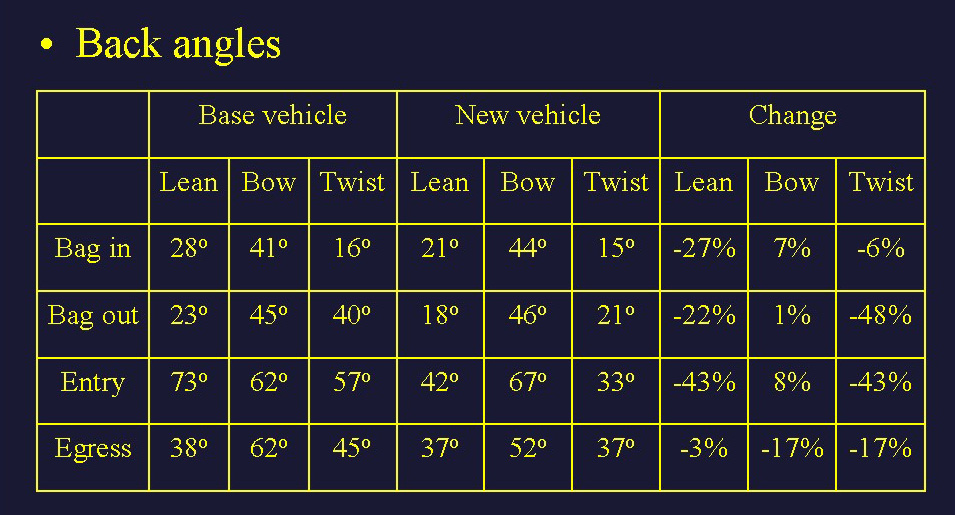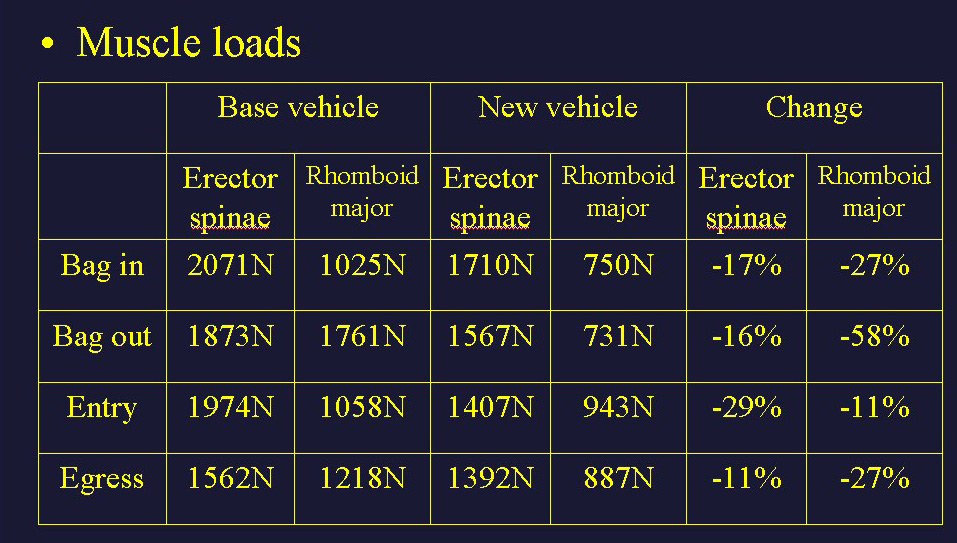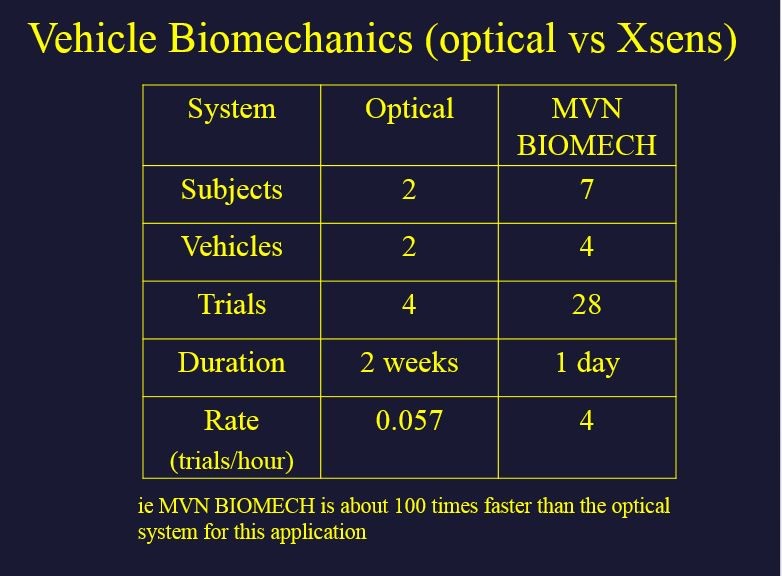Introduction
The biomechanics group at Coventry University recently completed an analysis of vehicle ingress and egress for General Motors when they were approached by Shanghai Automotive to undertake a similar, but larger, analysis of their vehicles.
For the General Motor study they used their own optical tracking system. For the study described below they approached Xsens to use the MVN Analyze system, in order to measure without occlusion. The primary aim of the study was to determine if MVN Analyze could be used with our current method, while measuring kinematics and muscle load during ingression and egression of motor vehicles.
Methods
Subjects
Seven subjects were selected from the employees of SAIC at the Longbridge site to maximize the variation in anthropometric metrics within the sample.
Measurements
To measure the movements of each of the major segments of the body the subjects wore the Xsens MVN Analyze motion capture suit. The movement was sampled at 120Hz.
Experimental Protocol
All of the subjects were instructed to ingress and egress current SAIC production vehicles, simulators of future models and comparable competitor vehicles. The subjects were instructed to:
- Walk to the vehicle through a distance of approximately 4m
- Open the door
- Enter the vehicle and sit in the rear seat
- Close the door
- Relax in the rear seat for a duration of approximately 2s
- Open the door
- Egress the vehicle
- Close the door
- Walk to approximately the starting position
No subject spontaneously reported discomfort or movement restrictions due to the measurement equipment.
Results Analysis
Joint angles were provided as direct output from MVN Analyze.
Loads in the muscles were calculated using BOB software and importing C3D data from MVN Analyze. BOB software is a musculoskeletal model developed at Coventry University. The loads in the muscles of the back were calculated using an optimization procedure [1, 2]. The BOB method minimizes the objective function of the sum of the squares of the muscles’ activation (defined by muscle force divided by maximal isometric force) subject to:
- The equality constraints – the torques across the joint due to the muscles equals the torque due to inertial load and externally applied loads
- The upper inequality constraints – the muscle cannot generate more force than the maximal isometric force
- The lower inequality constraints – the muscle force cannot be less than zero as the muscle cannot push
Results
Major joint articulation angles were recorded for all of the subjects during ingression and egression of 4 vehicles. Table 1 shows the change in the angles of articulation in the back between the base and re-designed vehicle. Table 2 shows the calculated changes to the loads in the back muscles between the original and modified vehicles.

Table 1: Back articulation angles

Table 2: Loads in selected back muscles
Examples of joint articulations are illustrated in Figure 1, with Figure 2 showing a detailed example of the knee angle.
Figure 1: Selected joint articulations for Subject ST, during ingression and egression of 4 vehicles.
Figure 2: Knee joint for Subject ST during ingression and egression of 4 vehicles.
Figure 3 shows examples of a subject during ingression (Figure 3A), while seated (Figure 3B) and during egression (Figure 3C). The muscle activity is indicated by the color of the muscle; a blue muscle has little activity whereas the activity of a red muscle is high.
Figure 3A: Colour coded muscle activations of one subject, during ingression in 4 vehicles (blue – low muscle activation; red – high muscle activation).
Figure 3B: Color coded muscle activations of one subject while seated, in 4 vehicles (blue – low muscle activation; red – high muscle activation
Figure 3C: Colour coded muscle activations during of one subject during egression from 4 vehicles (blue – low muscle activation; red – high muscle activation).
Table 3 shows a comparison of comparable workflow rates using the MVN Analyze system versus an optical tracking system for motion capture within a passenger vehicle.

Table 3: MVN Analyze system versus an optical tracking system
Conclusions
The results from the biomechanical analysis enabled the quantification of the joint articulations and muscle loadings. These results were compared with the results from a parallel study which recorded the user comfort levels whilst entering and exiting the vehicles. Further studies will be undertaken to establish a correlation between biomechanical metrics and vehicle comfort levels.
This study shows that the Xsens MVN Analyze system is suitable for recording biomechanical data during vehicle ingress and egress and is capable of providing reliable, clean data in effectively real time. The trial capture rate was approximately 70 times faster using the Xsens MVN Analyze than using an optical tracking system for this task.
Dr James Shippen
Biomechanics Research Group
Coventry University
UK
References
1) Shippen J, May B, “Calculation of Muscle Loading and Joint Contact Forces in Irish Dance”, Journal of Dance Science and Medicine, Volume 14 1 pp11-18 2010
2) Shippen J, Sports’ biomechanical data capture and analysis Chapter 8, Design for Sport ISBN 978-0-566-08859-9 Gower Publishing, 201